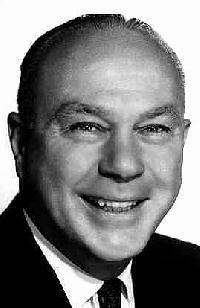Claim: SigAlerts, the Los Angeles advisories of severe traffic conditions, were named after radio executive Loyd Sigmon.
 | TRUE |
Origins: Traffic snarls and interminable drive-time delays are an unpleasant fact of life in
Every large city has its "traffic watch," complete with helicopter reporters who spot-check the local freeways and broadcast traffic conditions to commuters through a variety of drive-time radio shows, but

severity of congestion-causing incidents can easily rush through a dizzying array of freeway names and numbers in half a minute, and woe betide the less-than-attentive motorist who misses the key update for the freeway he was planning to take on a morning when something brings traffic to a standstill on that crucial road — his inattentiveness may strand him for hours.
Minor accidents and slowdowns are routine and, although annoying, are considered an ordinary part of the commute. But what about the large-scale interruptions; the overturned rig sprawling across three lanes, the five-car injury wreck, the hazardous materials spill, or the bomb threat?
Los Angeles has a special name for its traffic updates about unforeseen incidents that have caused what will be lengthy lane closures: SigAlerts. The official Highway Patrol definition of a SigAlert is "any unplanned event that causes the closing of one lane of traffic for
take.
Causes of SigAlerts are many and varied; some tragic, some funny. One of the more unusual SigAlerts was the Tuesday morning in October 1998 when a truck transporting ten tons of pies overturned on the transition from the Harbor to the Hollywood freeways, creating a pastry-coated traffic snarl that stretched for miles.
The word SigAlert eventually became a common and familiar term to Southland drivers, even though few of them were aware of its origins or knew what criteria triggered such an alert. (Los Angeles traffic reporters say the question they're most frequently asked is 'What's a SigAlert?,' with the second most-asked question being "What's the
"When I was doing traffic I got more questions about 'What the hell is a Sigalert?' than anything else," said Bill Keane, who pioneered radio traffic reporting on KNX and retired in 1993, after
The answer is that SigAlerts gained their name from the man who developed the technology for speedily gathering and disseminating traffic information, Loyd C. Sigmon. In 1955, Sigmon was an executive
Unfortunately, Los Angeles Police Chief William Parker rejected Sigmon's suggestion; he didn't want his officers diverted from their duties by having to phone a radio station to report every freeway accident. So Sigmon, who had served as radio engineer with the Army Signal Corps in Europe during
Although Sigmon's notification system was a technical success, it proved less of a commercial one. Chief Parker insisted that the system was too important to be used for the benefit of a single radio station and required that it be made available to everyone who wanted it. Sigmon was unable to gain the proprietary advantage he had envisioned for KMPC, nor did he ever profit personally from his invention, but Parker did give him due credit by coining the term "SigAlert" to describe the new high-tech traffic bulletins.
SigAlerts became part of the Los Angeles driving experience by October 1955. While it is impossible at this time to pinpoint the incident that prompted the first broadcast of the traffic advisory, one of its first major uses took place on
SigAlerts are restricted to traffic incidents these days, but in the beginning they were issued about all manner of items of concern: rabid dogs, a dam about to burst, gas leaks, and even an appeal on behalf of a druggist who had made a potentially deadly error in filling one customer's prescription. Those uses came to end after a SigAlert was issued to announce the collision of two ships in
In 1993, the Oxford English Dictionary added "SigAlert" to its all-inclusive compendium of the English language, thereby signaling that it had joined "couch potato" as another Left Coast term to make it into the lexicon of everyday life. These days the term is no longer limited to
Loyd Sigmon himself passed away at the ripe old age of 95 in Bartlesville, Oklahoma, on
Barbara "sigging in the rain" Mikkelson
Last updated: 29 March 2011
Sources: |
Carney, Steve. "He Labored to Help Us Out of That Jam." Los Angeles Times. 4 September 2000 (p. E2). Haldane, David. "It's No Accident That Sigalert Is a Traffic Watchword." Los Angeles Times. 18 December 1995 (p. B1). Harvey, Steve. "Only in L.A." Los Angeles Times. 12 January 1991 (p. B2). Harvey, Steve. "Inquiring Drivers Want to Know: What's a SigAlert in the No. 1 Lane?" Los Angeles Times. 5 June 2004. Hough, Robert. "Synonymous with LA Freeways." Ventura County Star. 28 December 1998 (p. E1). Purdum, Todd S. "How Los Angeles Traffic Snarls Spawned a Word." The New York Times. 18 May 1997 (p. 16). Remy, Holly Ocasio. "Gore Point Usually Not That Messy." The [Riverside] Press-Enterprise. 11 April 1994 (p. B1). Rivenburg, Roy. "Radio Broadcaster Put the 'Sig' in Traffic Alerts." Los Angeles Times. 4 June 2004 (p. A1). Waldman, Frank. "Saving Lives Top Goal in Freeway Construction." Los Angeles Times. 25 October 1955 (p. 2). Los Angeles Times. "Civil Defense Gadget Cuts In Radio Program." 17 November 1954 (p. 9). Los Angeles Times. "Attacks on Traffic Problem Encouraging, Experts Say." 5 November 1955 (p. A1). Los Angeles Times. "Wreck Not Mishandled, Parker Says." 26 January 1956 (p. A1).
